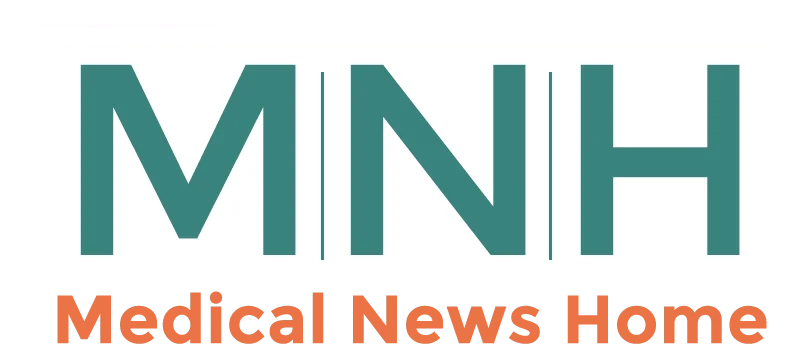Digital Health Innovations: Exploring the Internet of Medical Things (IoMT)
- Updated on: May 6, 2025
- Published on Jul 9, 2023

In the rapidly evolving landscape of healthcare, digital health innovations have emerged as a transformative force. One of the most promising advancements is the Internet of Medical Things (IoMT), which combines the power of technology and healthcare to revolutionize patient care, enhance diagnostics, and improve overall wellness.
What is Digital Health?
Digital health refers to the use of technology and digital tools to enhance healthcare delivery, improve patient outcomes, and empower individuals to take control of their well-being. It encompasses a wide range of applications, including telemedicine, mobile health (mHealth), wearable devices, health apps, and more. Digital health solutions aim to leverage technology to make healthcare more accessible, efficient, and patient-centric.
The Rise of Internet of Medical Things (IoMT)
The Internet of Medical Things (IoMT) represents the interconnected network of medical devices, sensors, software applications, and healthcare systems. IoMT enables the seamless exchange of health data between various devices and platforms, facilitating real-time monitoring, diagnosis, and treatment. The proliferation of IoMT has been driven by advancements in wireless communication, miniaturization of sensors, and the increasing adoption of connected devices in healthcare settings.
Benefits of Internet of Medical Things
The integration of IoMT in healthcare brings forth numerous benefits. Here are some key advantages:
Enhanced Remote Patient Monitoring: IoMT enables healthcare providers to remotely monitor patients’ vital signs and health conditions, leading to early detection of abnormalities and timely intervention.
Improved Healthcare Access: IoMT bridges the gap between patients and healthcare professionals, particularly in remote or underserved areas. It allows patients to access medical advice, consultations, and even receive treatment from the comfort of their homes.
Efficient Data Management: IoMT facilitates the collection, storage, and analysis of vast amounts of health data. This data can be utilized for population health management, predictive analytics, and personalized medicine.
Empowering Patients: IoMT empowers individuals to actively participate in their own healthcare. Patients can track their vital signs, medication adherence, and lifestyle habits using wearable devices and health apps, leading to increased engagement and better health outcomes.
Internet of Medical Things Applications
The applications of internet of medical things span across various domains within healthcare. Some notable examples include:
Remote Patient Monitoring Systems: IoMT enables continuous monitoring of patients with chronic conditions, providing healthcare professionals with real-time data to manage their care effectively.
Smart Wearable Devices: Wearable devices such as fitness trackers, smartwatches, and biosensors collect data on physical activity, heart rate, sleep patterns, and more. This data can be leveraged to promote healthy lifestyles and prevent diseases.
Telemedicine and Virtual Consultations: Internet of medical things facilitates virtual doctor-patient interactions, eliminating geographical barriers and improving access to healthcare services.
Connected Medical Devices: Medical devices like insulin pumps, pacemakers, and smart inhalers can be connected to IoMT networks, allowing for remote monitoring, proactive maintenance, and timely interventions.
Challenges and Concerns
Here are the challenges and concerns associated with IoMT:
- Data Security and Privacy: The interconnected nature of IoMT raises concerns about the security and privacy of sensitive health data. Robust cybersecurity measures and strict data protection regulations are essential to mitigate these risks.
- Interoperability and Standardization: Internet of medical things involves multiple devices, platforms, and systems. Ensuring seamless interoperability and standardization across these components is crucial for effective data exchange and collaboration.
- Reliability and Accuracy: As IoMT heavily relies on data from various sensors and devices, ensuring the accuracy and reliability of the collected data is paramount. Calibration, validation, and quality control measures are necessary to maintain data integrity.
- Regulatory Compliance: Compliance with healthcare regulations and standards is a challenge in the IoMT landscape. Adhering to frameworks such as HIPAA (Health Insurance Portability and Accountability Act) and GDPR (General Data Protection Regulation) is necessary to protect patient rights and ensure ethical use of data.
- Ethical Considerations: The collection and utilization of vast amounts of health data through IoMT raise ethical concerns. Safeguarding patient autonomy, ensuring informed consent, and addressing potential biases in algorithmic decision-making are important ethical considerations.
Security and Privacy in IoMT
Security and privacy are paramount in the realm of IoMT. Measures must be implemented to safeguard patient data and prevent unauthorized access. Some key strategies include:
Encryption and Authentication: Implementing strong encryption algorithms and two-factor authentication methods to secure data transmission and access.
Access Controls: Restricting access to sensitive medical data based on role-based permissions and user authentication.
Data Governance and Compliance: Adhering to regulatory frameworks such as HIPAA (Health Insurance Portability and Accountability Act) to ensure compliance with data privacy and security regulations.
Future of Internet of Medical Things
The future of internet of medical things holds immense possibilities for healthcare. We can expect the following as technology develops:
- Advancements in Artificial Intelligence (AI) and Machine Learning (ML): As technology continues to evolve, we can expect significant advancements in AI and ML algorithms. These technologies will enhance the capabilities of IoMT by enabling predictive analytics, personalized medicine, and automated diagnosis. AI-powered algorithms can analyze vast amounts of health data to identify patterns, make accurate predictions, and provide valuable insights for healthcare professionals.
- Expansion of IoMT Ecosystem: The IoMT ecosystem will continue to expand with the integration of more connected devices, wearables, and healthcare applications. This expansion will lead to more comprehensive and integrated healthcare solutions. We can expect to see a wider range of wearable devices, smart sensors, and connected medical devices that seamlessly communicate and exchange data within the IoMT ecosystem.
- Improved Patient Outcomes: IoMT has the potential to significantly improve patient outcomes. With real-time monitoring, proactive interventions, and early detection of diseases, healthcare professionals can provide personalized care plans tailored to individual patients. IoMT empowers patients to actively participate in their healthcare journey, leading to better engagement, adherence to treatment plans, and ultimately, improved health outcomes.
- Precision Medicine and Personalized Care: IoMT plays a pivotal role in advancing precision medicine and personalized care. Through the integration of genetic data, lifestyle factors, and real-time health data, healthcare professionals can develop tailored treatment plans that consider an individual’s unique characteristics and needs. This personalized approach enhances treatment efficacy and reduces adverse events.


